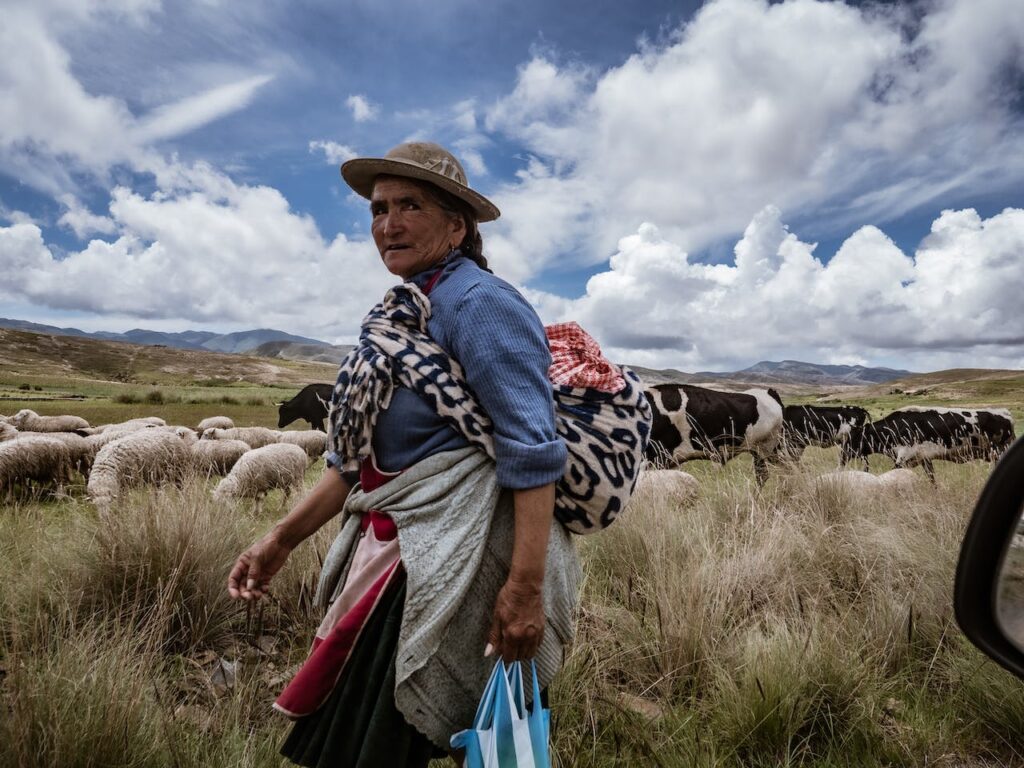Food and agriculture were at the centre stage at the COP28 negotiations where FAO’s Global Roadmap was presented, setting a strategy for achieving SDG2 while remaining within the 1.5C threshold. With the core ambition to address malnutrition in all its forms, the roadmap builds on 10 domains of action. Despite some promising engagements, the strategy put forward critically lacks a holistic approach, which not only jeopardizes its success but will come at the expense of smallholder farmers. What could have been an ambitious step towards food systems transformation for people and the planet instead proposes technological fixes that sustain the status quo.
Omitting agroecology – the Achilles heel of FAO’s roadmap
While the opening lines of the strategy claim to “champion a holistic approach to transforming agrifood systems” this commitment is not reflected in the goals, or the levers put forward to achieve this objective. The roadmap’s commitment to transformation is questionable because it fails to address the main culprits of the sector, namely industrial animal farming and chemical fertilizers. Demonstrating a lack of consideration for the sector’s impacts beyond greenhouse gas (GHG) emissions, the proposed transition relies on risky technological fixes, such as Bioenergy with Carbon Capture and Storage. The absence of agroecology in the roadmap is further evidence of an approach to achieving SDG2 which lacks a holistic perspective. Recognized as a transformative adaptation and mitigation approach that addresses the twin challenge of climate change impacts and biodiversity loss, agroecology holds important promises towards improving food security and nutrition in low and middle-income countries. Not harnessing its potential to address social and environmental externalities is concerning, where smallholder farmers could be the first ones to bear the consequences. The roadmap does make sporadic mentions of some agroecological practices, such as no-till farming, intercropping and crop diversification. However, implementing these practices may be erratic without a comprehensive agroecological approach. Ultimately, instead of putting smallholder farmers at the forefront of the transition by leveraging local knowledge and expertise, the current strategy relies on technological fixes carried forward by big industry players. This approach falls short of what agroecology could have achieved and may not be the most effective pathway towards transitioning to sustainable food systems.
In this article, we explain why.
A transition at the expense of smallholder farmers
The roadmap’s failure to deliver for smallholder farmers echoes concerning findings by the Ceres2030 research consortium. The outcome of 3-years of research reviewing more than 100,000 articles exposed a significant gap in knowledge, with less than 5% of studies relevant to smallholders. The disproportionate focus on new technologies is the main culprit, where priority is given to developing new innovations.
This bias is perpetrated in a strategy where enhanced productivity in low-yield settings is achieved through technological fixes, based on a top-down approach. The promotion of technology to smallholders is seen as a key lever to boost efficiency, combat hunger, and reduce emissions. However, this techno-optimism forgoes important uncertainties regarding socio-ethical implications resulting from technological adoption. As current technological developments are directed towards capital intensive players, the potential of technologies to exacerbate social inequalities cannot be ignored. The bold claim of “…accelerating spending in R&D today is pivotal to maximise future dividends and push the productivity frontier post-2035” raises questions about the underlying goal of the strategy and who might benefit from it most.
Failing to harness the potential of smallholder farmers to lead this transition is a major pitfall of the roadmap, with two key risk areas highlighted below:
- Livestock intensification
In the livestock sector, productivity gains are to be achieved through the intensification of livestock production where “…low carbon investments should give priority to ruminant systems characterised by low productivity, particularly extensive systems that yield less than 2,000 kg of FPCM (FPCM emissions per unit of fat and protein corrected milk) per year”. These systems are more typical in the global south and are characterised by a higher share of their footprint related to enteric fermentation as opposed to manure management, feed and fertiliser. Nonetheless, it is important to note that intensifying livestock production without an agroecological approach could bring a greater dependency on external inputs, perpetuating the failures of industrial animal farming. Therefore, a bottom-up approach to intensification involving active participation of smallholders and recognizing local knowledge, is paramount to fostering practices that are contextually relevant, socially inclusive, and environmentally resilient.
- Modern bioenergy pathway
The modern bioenergy pathway proposes doubling current levels of solid biomass use by 2030, and tripling by 2050. However, the significant risks that bioenergy brings in terms of deforestation, land grabbing and monoculture plantation, raise doubts about its endorsement as a clean energy source. Bioenergy development has been skewed towards large-scale private actors, raising significant social justice and equity concerns. Implementing bioenergy leads to critical land-use trade-offs, between bioenergy-crop cultivation, food-crop cultivation, and biodiversity conservation, disproportionately affecting smallholders and jeopardizing food security. In this context, careful consideration of the socio-economic and environmental implications of large-scale bioenergy deployment is essential to mitigate adverse effects on the livelihoods of smallholder farmers.
Final Reflections
To conclude, we second the scientific community’s concerns regarding strategies which call for marginal changes at a time where transformative change is needed. The omission of agroecology as one of the key levers for an inclusive and holistic approach to food systems transformation is of particular concern.
